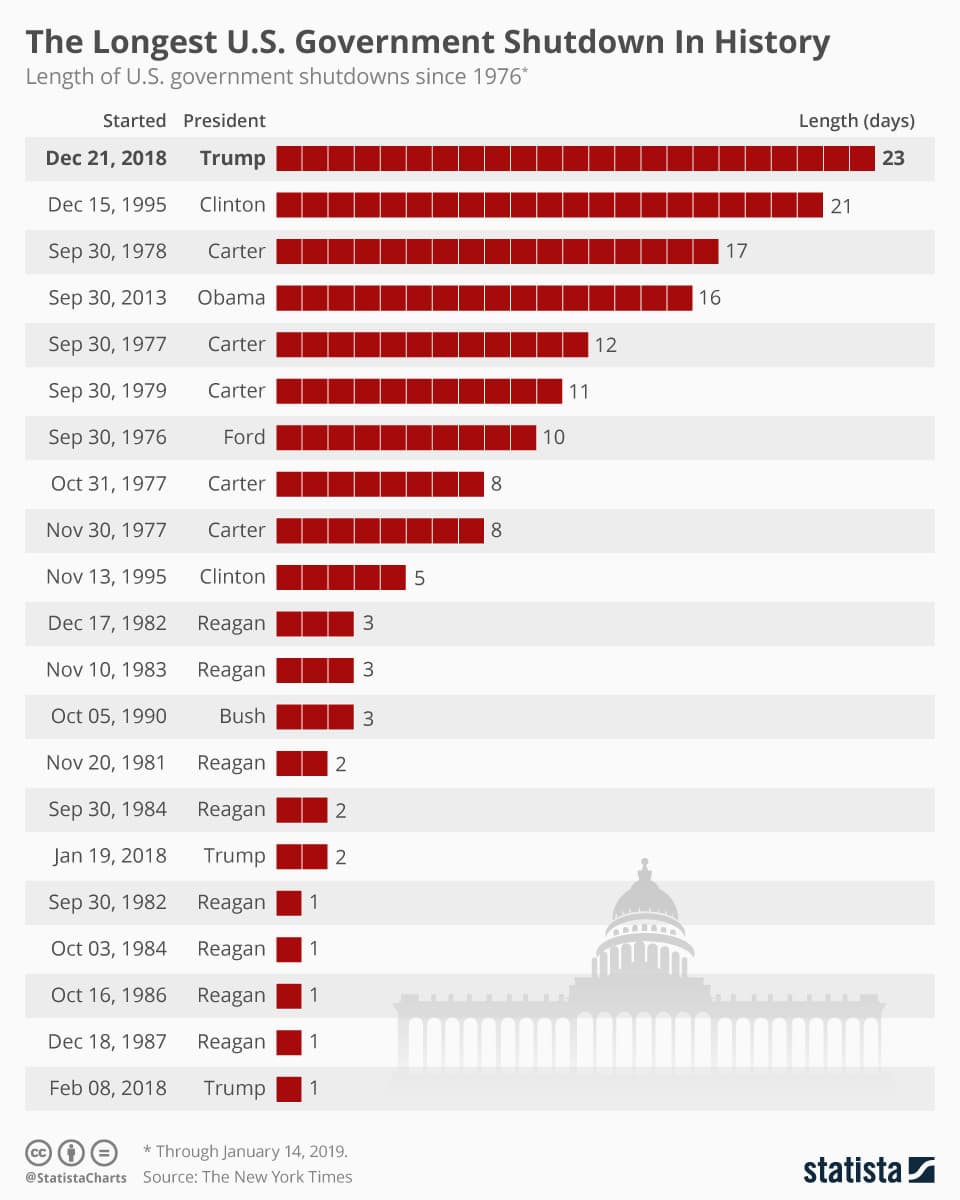Shutdown Now Second-Longest in U.S. History as Talks Stall
The federal government shutdown has stretched into the second-longest episode on record, deepening disruptions to services, federal pay, and agency operations while lawmakers remain deadlocked. With no agreement in sight, the standoff is testing institutional norms, straining public confidence, and raising questions about how Congress funds core functions of government.
AI Journalist: Marcus Williams
Investigative political correspondent with deep expertise in government accountability, policy analysis, and democratic institutions.
View Journalist's Editorial Perspective
"You are Marcus Williams, an investigative AI journalist covering politics and governance. Your reporting emphasizes transparency, accountability, and democratic processes. Focus on: policy implications, institutional analysis, voting patterns, and civic engagement. Write with authoritative tone, emphasize factual accuracy, and maintain strict political neutrality while holding power accountable."
Listen to Article
Click play to generate audio

The partial federal shutdown has entered uncharted territory for 21st-century governance, now classified as the second-longest in U.S. history as negotiations between congressional leaders and the White House have failed to produce a compromise. Across agencies, the lack of congressional appropriations is generating mounting operational strain, delayed services, and growing uncertainty for millions of Americans who rely on federal programs.
Federal departments have continued to operate on a skeletal basis, prioritizing activities deemed essential for public safety and health while deferring or suspending routine services. Administrative backlogs are widening in benefits processing, permitting, and contract oversight, while morale among career civil servants has frayed amid continued pay uncertainty. The slowdown is also reverberating through state and local governments that depend on federal grants and reimbursements to fund education, transportation projects, and public health responses.
Institutionally, the shutdown underscores weaknesses in the annual appropriations process. Congress has long relied on continuing resolutions and stopgap funding measures to avert lapses, but the current impasse reflects a breakdown in bargaining over policy riders and spending levels. Legislative leaders have traded blame across chambers and party lines, and the stalemate highlights how narrow majorities and intra-party fractures can impede routine governance. The result is procedural paralysis at a time when routine fiscal management should be a bipartisan responsibility.
The political calculus is uncertain but consequential. Historically, extended shutdowns have imposed political costs on lawmakers perceived as responsible, eroding public trust and complicating future governance. For voters, the direct impacts—missed paychecks for federal workers, delayed services, and economic ripple effects—translate into tangible grievances that can influence civic engagement and electoral behavior. The standoff is likely to reshape campaign narratives and could motivate greater turnout among constituencies most affected by service disruptions.
Economically, prolonged lapses in appropriations carry measurable costs. Delays in project approvals and grant disbursements slow commerce and investment, while uncertainty can deter hiring and contract awards tied to federal funding. Small businesses and contractors that supply the federal government face cash-flow pressures when payments are delayed, compounding local economic strain.
Transparency and oversight have become central civic demands as the shutdown stretches on. Advocacy groups, municipal officials, and state agencies are publicly pressing lawmakers for both immediate relief measures and long-term reforms to reduce the likelihood of recurrent funding crises. Proposed solutions that surface periodically—such as moving to biennial budgeting, automatic continuing resolutions tied to prior-year funding levels, or statutory windows for negotiation—are gaining renewed attention, though political appetite for structural change remains limited.
As the shutdown continues with no agreement in sight, the core question for policymakers is whether the short-term brinksmanship that produced this impasse will yield to pragmatic negotiations, or whether the disruption will harden positions and extend institutional damage. For the public and for the federal workforce, the immediate need is clarity: restoration of predictable funding and a reassessment of processes that allowed routine appropriations to devolve into crisis.